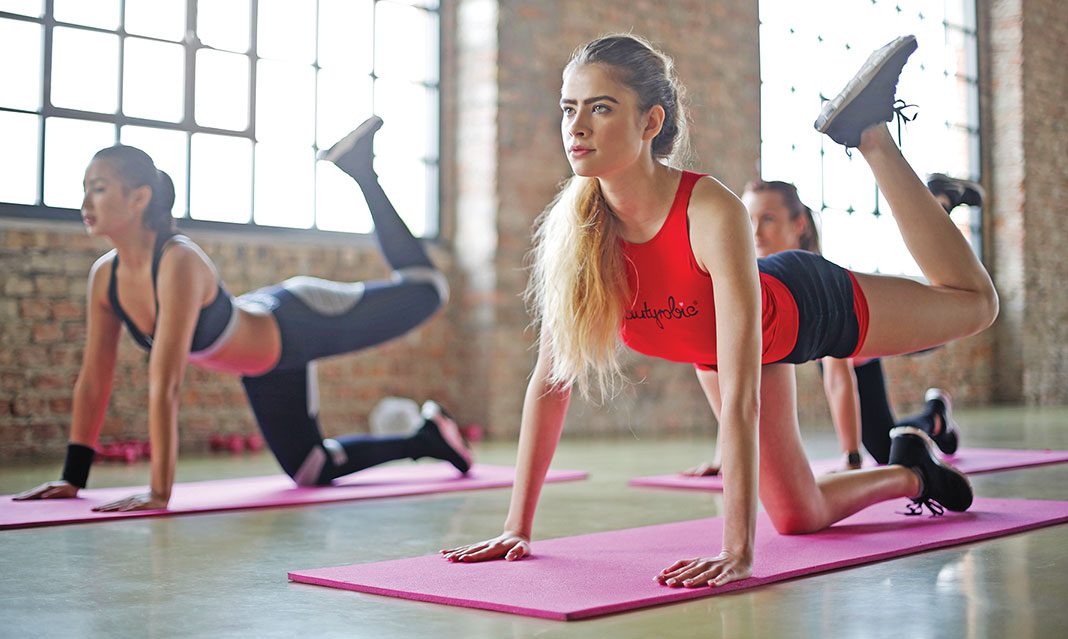Yoga, found in writings as early as the Upanishads, dates back to the Vedic age, approximately 500 – 600 BCE, and focuses on enlightenment through a lifestyle focused on spiritual mindfulness as well as mental and physical health. The fundamental theory supporting the branch of Hatha Yoga reflects a modern consensus that physical health and balance is a prerequisite for cognitive performance and success. This underlying algorithm is accomplished through Hatha Yoga’s division of eight-fold paths to perfect health. Although modern practice makes use of only two: breathing and posture.
In a similar vein, Joseph Pilates describes his invention of pilates as “the art of controlled movements.” With conviction in the interdependence of physical and mental health, pilates uniquely emphasizes the mind-body connection in its concentration of posture, strength, and flexibility. Overall, pilates focuses on improving one’s strength of core, or the area between the shoulders and pelvis.
Yogilates functions as a natural fusion of these two disciplines, incorporating the benefits of both. While adopting the emphasis on core muscles from pilates, it also retains the breathing and postures of yoga.
Unbeknownst to many students, the RAWC offers free group fitness classes such as Zumba, indoor cycling, full-body workouts focusing on cardiovascular and muscular fitness, and the aforementioned, yogilates. In fact, last Thursday, the RAWC held its routinely scheduled yogilates class from 6:10 p.m. to 7 p.m. in the Dance Studio. The class environment maintained a quiet mindful atmosphere throughout, with ambient music in the background. Participants made use of yoga mats to proceed with their hour-long exercise as an instructor guided them through several introductory yogilates poses. The class started with a warmup of gentle floor-based movements and eventually moved into core strength and stretching work, while finishing off with slightly more challenging standing postures. Some of these included the popular downward and upward facing dog. The former is used to stretch the shoulders, arms, hamstrings, and calf muscles. The latter pose stretches the chest, lungs, abdomen, shoulders and strengthens the spine as well as arms and wrist. Both, however, are used to improve posture and relieve fatigue by rejuvenating the body. Others included the chair pose, a high lunge, shoulder-stand, warrior two pose, boat pose, Viparita Karani, Half Lord of the Fishes, the corpse pose, child’s pose, and intense forward-bending pose. The posture emphasized most throughout the class was the sun salutation. This is a patterned succession of several poses that yields many benefits including improvement to one’s posture, balance, blood circulation, stimulation of several internal organs such as respiratory system, spinal nerves, lymphatic system, and toning of the digestive tract, spine, neck, shoulders, arms, legs and not to mention its strengthening of the heart. Scientific studies have provided well-documented support for its benefits, as well as its link to reducing weight loss and even preventing hair loss. As a whole, the sun salutation is known to emphasize the interconnection of mind and body to introduce serenity and a subsequent boost of energy levels to sharpened levels of awareness. The majority of class participants demonstrated competent performance of all poses, exhibiting quite a healthy and loyal following for UTM’s group fitness classes.
The consistent thematic message from the instructor was self-awareness of one’s pace and comfort zone. In fact, according to her, “We’re told to always give it our 110 per cent, although there is no such thing.” We can only contribute 100 per cent of our efforts to any endeavor and “our 100 per cent changes from day to day.” According to her, this capacity is influenced by stress, emotions, and our psychological and physical well-being within the specific space and time. She highlights one of the ultimate messages of yoga, proclaiming the importance of being self-aware of one’s limits, strengths, and who we are as a whole.



